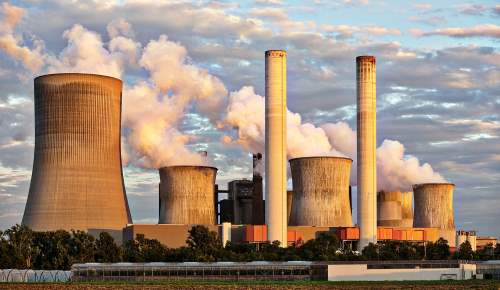
EU ETS: what you need to know about the reform of the cap-and-trade system to curb European emission

The lawmaking process to reform the European carbon market started in 2015 with the EU Commission’s first revision proposal from 2021 onwards (phase 4). With the EU Council’s final approval in February 2018, the ETS reform has become law and entered into force in early April (on the 20th day following its publication in the official journal on 14 March 2018).
The European Emission Trading Scheme is the world’s largest carbon market and a key tool of the Union’s climate policy. Launched in 2005, the scheme is currently in its third phase, lasting from 2013 until 2020. It regulates around 45 percent of the EU’s greenhouse gas emissions, covering more than 11,000 carbon-intensive installations (power stations and industrial plants) in the 28 member states plus Liechtenstein, Norway, and Iceland. It also covers emissions from airlines operating within these countries.
In the past decade, the European carbon market has been affected by a chronic supply glut (amounting to around 2 billion allowances) that has led to a progressive fall in prices from €30/tCO2 in 2008 to below €5/tCO2 in 2017, a level insufficient to stimulate EU energy and industrial plants to invest in emission reduction measures.
The system works on the “cap-and-trade” principle: it sets a cap on greenhouse gas emissions from covered installations and reduces it each year, according to the so-called Linear Reduction Factor (LRF). For the current phase 2013-2020, the LRF is 1.74%, with the goal of lowering installations’ overall emissions by 21% with respect to 2005 levels in 2020. Companies stock up emission permits through free allocation and auctions, and can trade them within the system to cover their emissions.
The phase 4 reform includes changes to push carbon prices up, by tackling allowances oversupply, and to protect European industries against the risk of carbon leakage (that is, when businesses relocate the production in countries with looser climate policy, due to lower costs). Key measures include a LRF of 2.2% per year (related to the 2030 goal of reducing emissions from covered sectors by 43% compared to 2005); the doubling of allowances’ amount to be transferred to the Market Stability Reserve in the first five years (the Market Stability Reserve, or MSR, is a compensation mechanism to prevents extremes in the allowances’ supply, which will start in 2019); updates of benchmarks and free allocation rules to guarantee support to those sectors at highest risk of carbon leakage (read about all elements of the reform on the EU Council’s official release). Beside other changes, the new directive also introduces two support mechanisms to help the industry and the power sectors in the transition to a low-carbon economy: the Innovation Fund, dedicated to the demonstration of innovative technologies in industry, and the Modernization Fund, to facilitate investments in the power sector in lower income member states.
In the weeks preceding the reform’s final approval, EU carbon prices have start surging and exceeded €10/ton, a level unseen since 2011.
The International Emissions Trading Association, whose members include banks, brokers, emitters and exchanges, welcomed the reform as a key step to strengthen the market. According to the latest analysis by the International Carbon Action Partnership, the new measures send a strong signal that European governments take the goal of long-term decarbonization seriously.
However, other analyses, such as that by the think tank Sandbag, stressed that the reform did not reflect the level of ambition required by the Paris Agreement, and that further adjustments will be needed to align the ETS with EU international climate commitments. The High Level Commission on carbon prices led by economists Stern and Stiglitz estimated a price level consistent with the Paris goals at between €34 and €68/tCO2 for 2020, and between €43 and €85/tCO2 for 2030.
According to Carbon Market Watch, the EU ETS must be complemented by additional measures at the national level, for example by setting a carbon floor price such as that implemented in the United Kingdom at £18/tCO2.
Read more:
The official text of EU Directive 2018/410, detailing the EU ETS reform for 2021-2030.
The press release by the EU Council, summarizing the main elements of EU ETS reform.
The EU ETS section on the EU Commission website.

